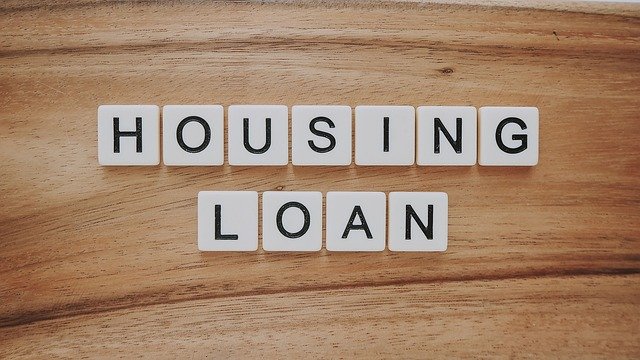Understanding Home Equity Conversion Options for Seniors
A reverse mortgage allows homeowners aged 62 and older to convert part of their home equity into cash without selling their property. This financial tool provides monthly payments, a lump sum, or a line of credit while allowing you to remain in your home. Understanding how reverse mortgages work, their benefits, and potential drawbacks can help you make an informed decision about whether this option aligns with your retirement planning goals.

What Is a Reverse Mortgage and How Does It Work?
A reverse mortgage is a loan available to homeowners 62 years or older that allows them to access their home equity without monthly mortgage payments. Unlike traditional mortgages where you make payments to the lender, a reverse mortgage pays you. The loan balance grows over time as interest and fees accumulate, and repayment is typically required when you sell the home, move out permanently, or pass away.
The most common type is the Home Equity Conversion Mortgage (HECM), which is federally insured and regulated by the Federal Housing Administration (FHA). The amount you can borrow depends on your age, home value, current interest rates, and the lending limit set by the FHA.
Investing in Reverse Mortgages: Is It Right for You?
Investing in reverse mortgages requires careful consideration of your financial situation and long-term goals. This option works best for homeowners with significant equity who want to supplement retirement income while staying in their homes. The funds can be used for any purpose, including healthcare costs, home improvements, or daily living expenses.
Before proceeding, consider your ability to maintain property taxes, homeowners insurance, and home maintenance costs, as these remain your responsibility. Failure to meet these obligations could result in loan default and potential foreclosure.
Investing Reverse Mortgage Proceeds: Strategic Approaches
Once you receive reverse mortgage proceeds, how you invest or use these funds can significantly impact your financial future. Some homeowners use the money to pay off existing debts, reducing monthly expenses. Others invest in low-risk securities or use funds for home modifications that improve accessibility and safety.
Consider working with a financial advisor to develop an investment strategy that aligns with your risk tolerance and retirement timeline. Conservative investments like certificates of deposit or treasury bonds may provide steady returns while preserving capital for future needs.
Home Equity Loans vs. Reverse Mortgages: Key Differences
Home equity loans and reverse mortgages both allow you to access your home’s equity, but they work differently. Traditional home equity loans require monthly payments and have fixed terms, while reverse mortgages provide payments to you without requiring monthly repayment during the loan term.
Home equity loans typically offer lower interest rates and fees, but you must qualify based on income and credit score. Reverse mortgages have fewer qualification requirements but generally carry higher costs and fees. Your choice depends on your income stability, credit situation, and long-term housing plans.
Proprietary Reverse Mortgage Options for High-Value Homes
Proprietary reverse mortgages, also called jumbo reverse mortgages, are private loans not insured by the FHA. These products are designed for homes valued above the FHA lending limit, which varies by location but is typically around $1,089,300 in most areas.
These loans may offer higher loan amounts than HECM loans but come with different terms and protections. Interest rates and fees can vary significantly between lenders, making it important to compare options carefully. Proprietary reverse mortgages may also have different repayment terms and fewer consumer protections than federally insured options.
| Lender | HECM Rate Range | Proprietary Rate Range | Origination Fees |
|---|---|---|---|
| AAG | 6.5% - 7.2% | 7.0% - 8.5% | $2,500 - $6,000 |
| Finance of America Reverse | 6.3% - 7.0% | 6.8% - 8.2% | $2,500 - $6,000 |
| Longbridge Financial | 6.4% - 7.1% | 7.2% - 8.7% | $2,500 - $6,000 |
| Mutual of Omaha Mortgage | 6.6% - 7.3% | N/A | $2,500 - $6,000 |
Prices, rates, or cost estimates mentioned in this article are based on the latest available information but may change over time. Independent research is advised before making financial decisions.
Understanding Costs and Fees
Reverse mortgages involve several costs including origination fees, mortgage insurance premiums, appraisal fees, and closing costs. HECM loans require an upfront mortgage insurance premium of 2% of the home’s value, plus an annual premium of 0.5% of the outstanding balance.
Interest rates can be fixed or adjustable, with adjustable rates typically starting lower but potentially increasing over time. Servicing fees may also apply, though many lenders have eliminated these charges. Understanding all costs upfront helps you make an informed comparison between lenders and loan products.
Reverse mortgages can provide valuable financial flexibility for qualified homeowners, but they require careful consideration of costs, benefits, and long-term implications. Consulting with HUD-approved counselors and financial advisors can help ensure this option aligns with your retirement planning strategy and financial goals.




